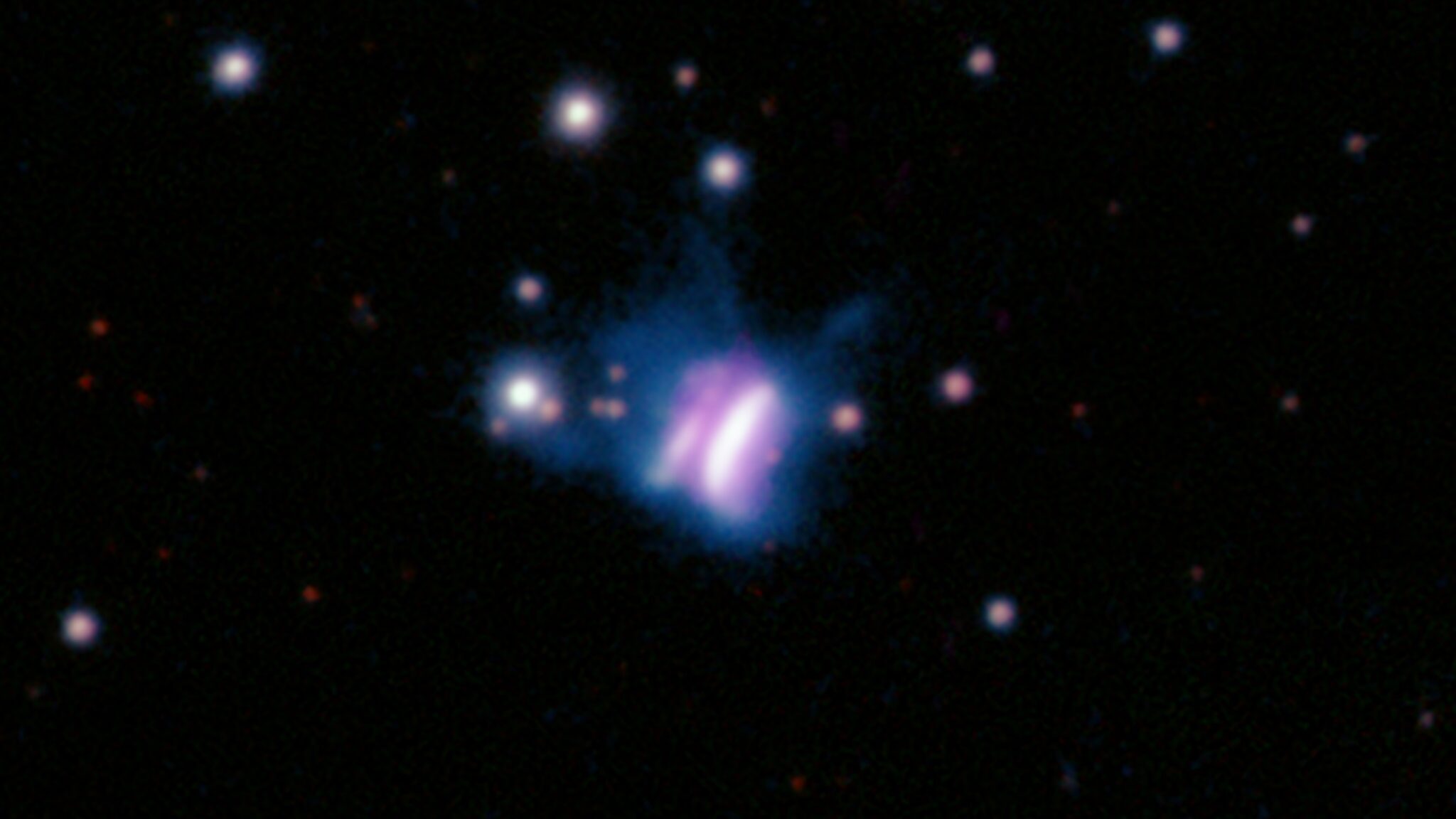Scientists have found the largest planetary disk ever observed, stretching hundreds of billions of kilometers. Its huge shadow makes the disk look like a giant butterfly. But the most interesting thing is that this amazing object has been ignored by astronomers for a long time.

The IRAS 23077+6707 object was first spotted by the IRAS astronomical satellite back in the 1980s and designated as a strange source of infrared radiation. In 2016, the object was suddenly “rediscovered” using the Pan-STARRS telescope, when astronomer Ciprian Berghea from the US Naval Observatory was conducting a survey of active galaxies in the constellation Cepheus.
Dracula’s Chivito
At first, Berghea did not have accurate information about the object. But it turned out that IRAS 23077+6707 had a characteristic shape with identical parts that were separated by a dark stripe — a characteristic feature for protoplanetary disks.
The light parts of the disk represent the light scattered by dust in the upper layers of the disk, whereas the dark band is the equivalent of the ecliptic plane of our Solar System, where most of the material is concentrated. This dense area of matter blocks and absorbs the light of the central star of the system. The upper and lower planes of the disk diverge gradually, so the strip separating them creates a shape resembling a butterfly. IRAS 23077+6707 was nicknamed “Dracula’s Chivito” because in the astronomer’s native country (Uruguay), Chivito is a sandwich similar to a hamburger.
The first protoplanet was spotted in the disk
Observations using the Submillimeter Array telescope in Hawaii have confirmed that this “sandwich” is a protoplanetary disk. Then it turned out that the astronomer hit the jackpot, because IRAS 23077+6707 is the largest known protoplanetary disk that has ever been seen. There is so much matter in the disk that it is enough to form a large number of giant planets at a distance 1,500 times greater than the distance between the Sun and the Earth.
This planetary cradle is 800 to 1000 light-years away from us, close to the star-forming region of Cepheus. The radio waves emitted by the gas inside the disk have different shifts, which indicates the rotation of the system. In addition to its gigantic size, another feature is that the western part of the disk is noticeably dimmer than the rest. The reason may be that this part lies in the shadows.
It is assumed that there is already one newborn exoplanet inside the disk. This planet is probably actively absorbing the surrounding material, forming a gap in the disk.
Earlier we reported that the mystery of the formation of spiral arms in protoplanetary disks had been revealed.
According to space.com
Follow us on Twitter to get the most interesting space news in time
https://twitter.com/ust_magazine


